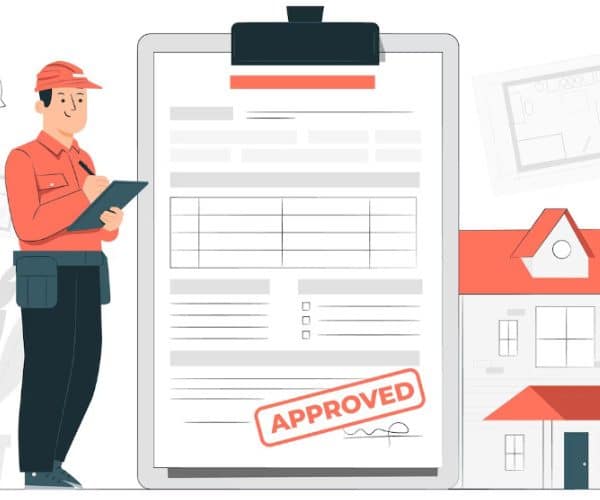If you run a business, especially with international or bulk shipments, you have already heard the term “shipping invoice.” This invoice is a legal document that establishes the contract between the supplier/seller and the buyer. When a company sends a freight shipment of goods, it comes with an invoice that has all the details about the goods. This shows the quantity of the products to be received, how much they are worth, their size, weight, and whether they are fragile or need special care. This document ensures that the shipping process is carried out smoothly without any delays or disruptions.
It’s stated that up to 30% of delayed payments are caused by unclear and poorly made invoices. This hinders the business’s progress because if a business is waiting for cash that they could be investing in their next purchase or marketing activity, it is still in process, which slows the pace. Therefore, understanding what a shipping invoice or a bill of lading means and how to make an invoice with all the required information tabs that fulfils its purpose is important.
What is a shipping invoice or a bill of lading?
A shipping invoice is a legal document or a contract that details the products being shipped from a seller to a buyer. It’s a record of the transaction that has all the information for both parties involved in the shipment, like tracking number, names of seller and buyer, date of shipment being sent, carrier, and goods information. This invoice helps track shipments, verify contents (like the number of products), and maintain smooth logistics operations.
A shipping invoice is also known as a bill of lading, where lading means the process of loading a ship with cargo.
Why is a shipping invoice important?
As it serves as a contract between both parties, it is easy for them to make claims in case of any discrepancies, such as damage, the wrong number of goods, or the wrong order. Both parties sign this invoice: the seller when the shipment is shipped and the buyer when it is received. This way, both buyer and seller make sure they are involved in this business, and if anyone backs off or makes any claim against the contract, they can show them the proof with their signature.
A shipping invoice is important for
1- Accurate deliveries:
With a shipping invoice in hand, you can verify whether you (the Buyer) received the correct items. And for the freight carrier, it’s important to make sure that the items are being shipped according to the details given on the invoice.
2- Custom clearance:
If you are doing international trade, the information on the shipping invoice is crucial. You have to make sure that the invoices are flawless for smooth customs processing.
3- Maintain records:
Shipping invoices are legal records and contracts that list all the trading that is being done between the seller and the buyer. They also help businesses when making financial statements and audits.
4- Resolving disputes:
In case of a dispute regarding the goods or services, you can provide this documented evidence and resolve the issues.
What information goes on the invoice?
A shipping invoice comes with the following details;
| Shipper/Receiver Details | Full names, addresses, and contact information for both parties. |
| Purchase Order (PO) Number | To track the shipment and for reconciliation |
| Item List | Quantity, weight, and descriptions (e.g., “50 units of ceramic mugs, 12 oz each”). Don’t use any vague terms like “miscellaneous goods.” |
| Freight Class | There are a total of 18 freight classes. Which class you are in depends on your shipping costs based on weight, dimensions, and liability
For example: Among 18 classes, “50” is for durable machinery while “500” is for fragile items. |
| Packaging Type | To avoid mishandling, specify the type of packaging your goods are packed in, such as pallets, cases, crates, or drums. |
| Special Instructions | If your products require special instructions, such as hazardous material alerts or delivery time windows, mention them in the invoice. |
| Signatures | Both parties need to sign the invoice to validate receipt and terms |
Difference between a shipping invoice and a commercial invoice
Both documents are used in the shipping process, but they serve different purposes:
- Shipping Invoice: This invoice focuses on the logistics of the shipment, detailing what is being shipped, to whom, and how.
- Commercial Invoice: Commercial invoices are mostly used in international shipments and primarily for customs purposes. They provide detailed information about the transaction, including the value of goods, country of origin, and Harmonized System (HS) codes.
| Feature | Shipping Invoice | Commercial Invoice |
| Purpose | Tracks shipment logistics | Legally required for customs clearance |
| Key Details | Weight, carrier, and delivery date | HS codes, Incoterms®, product value |
| Audience | Carriers and logistics teams | Customs authorities and buyers |
In international trade, a commercial invoice is needed for customs clearance, while a shipping invoice helps move goods.
Shipping Invoice Template
If you are just starting out, here’s how you can create a standardized shipping invoice.
[Your Company Name] [Company Address] [Contact Information]
Shipping invoice
- Invoice number:
- Date:
Sender information:
- Name:
- Address:
- Contact:
Recipient information:
- Name:
- Address:
- Contact:
Shipment details:
- Carrier:
- Tracking Number:
- Shipping Method:
Item list:
| Item Description | Quantity | Unit Price | Total |
Total value: Sum of all items
Payment terms: e.g., Net 30 days
| Shipping template type | What to add | Tool to create |
| Domestic Template | Focus on;
|
Moon Invoice |
| International Template | Focus on;
|
FreshBooks |
How to create a shipping invoice step-by-step
- Choose a Template: You can use a template available online or custom-make it to add the sections you need according to your business needs.
- Fill in Company Details: After choosing a template, include your company’s name, address, and contact information.
- Add recipient information: Now, add the buyer’s details accurately.
- List items: Add all the items being shipped. If you have multiple deliveries, you can either make multiple invoices or a mixed invoice that contains all the product details, including descriptions, quantities, and prices.
- Include shipping details: Add shipping details required to complete a hassle-free shipment. Add carrier information, tracking numbers, and shipping method, PO numbers, freight class, pickup dates, tracking numbers, and shipping method.
- Specify payment terms: Clearly state every payment condition, whether you receive a payment upfront, follow Net 30 or any payment conditions already discussed and agreed upon by both parties.
- Review: Double-check all information for accuracy before sending the invoice to the recipient.
- Attach invoice to shipment: Attach a physical copy of the invoice with the shipment and send a PDF via email.
- Track with software: The carrier you chose for the shipment will provide you with the tracking number. This will make it easy for you (a seller) and the buyer to see which phase your shipment is in. There are multiple software that generate quick invoices and also help you track your shipment in real time.
Mistakes to avoid while making the invoice
1- Wrong information:
A single mistake on an invoice while mentioning a number, name, quantity, etc., can have a big impact. A slight misunderstanding can cause delays (from the carrier’s side) and returns that could result in a bad reputation in the long run. Also don’t forget that it can be used for legal purposes as well.
2- Incorrect product details:
Make sure your product details are correct to avoid misunderstandings like colors, specifications, and usage etc.
3- Not using a standardized format
Changing invoice templates frequently can again cause confusion for carriers and buyers. Use a standardized template to avoid this.
Conclusion
A smooth flow of business activities keeps it running. Therefore, for a business involved in shipping goods, understanding how shipping invoice work is the first step to avoid misunderstandings and shipment delays. To speed up your process and prevent manual errors, it’s recommended to use software that creates quick invoices with standardized formatting.
Happy Shipping!
FAQs
What is a shipping invoice?
A shipping invoice is a legal document or a contract that details the products being shipped from a seller to a buyer. It’s a record of the transaction that has all the information for both parties involved in the shipment, like tracking number, names of seller and buyer, date of shipment being sent, carrier, and goods information.
What is a bill of lading?
A bill of lading is another term for a shipping invoice; it’s a legal accounting document that contains all the information on a freight shipment.
How can I create a shipping invoice?
You can use the already available templates online or create a custom template with all the required information fields to fulfil the shipment smoothly.
Is a shipping invoice a legal document?
Yes, it’s a legal document between a seller and buyer during a freight shipment. It’s also a contract between a seller and a carrier to avoid any discrepancies.





